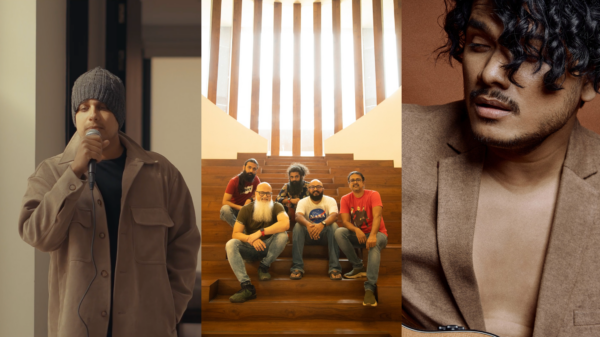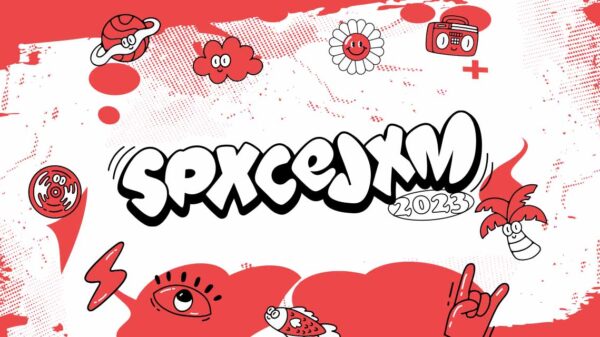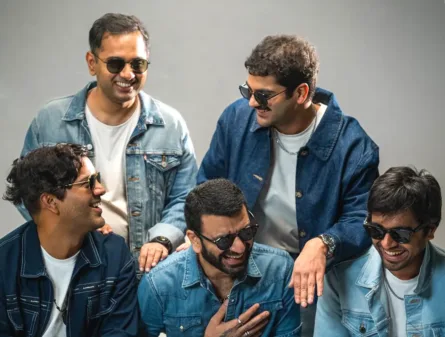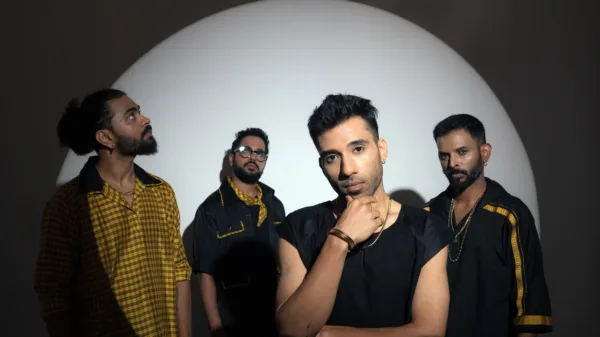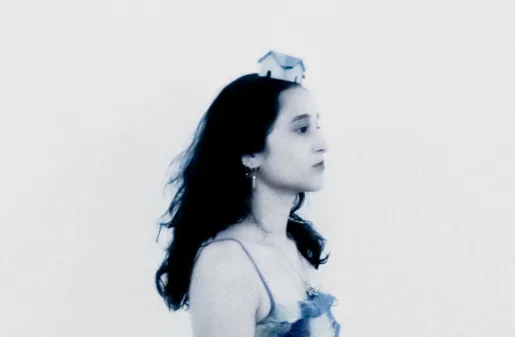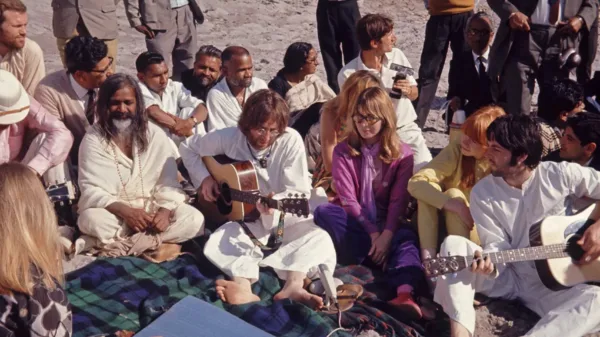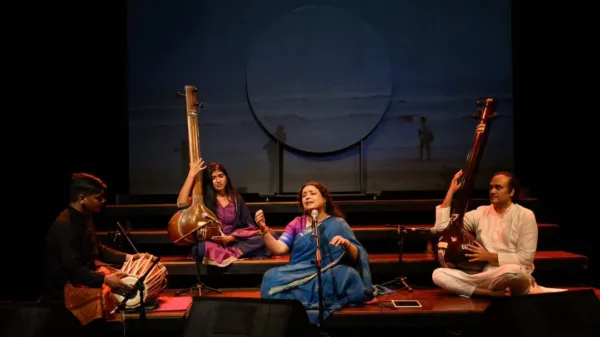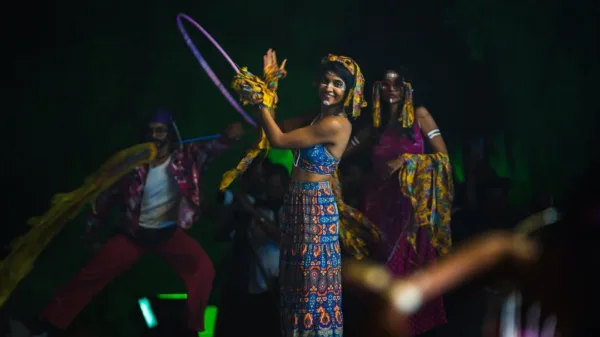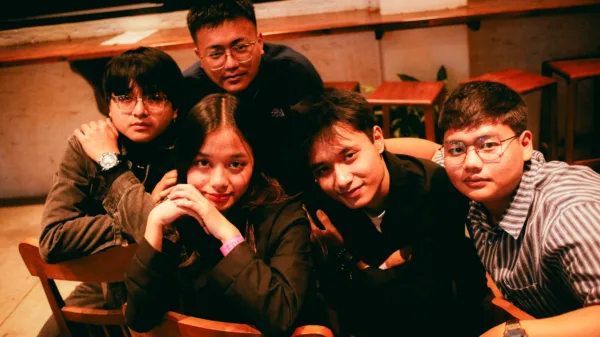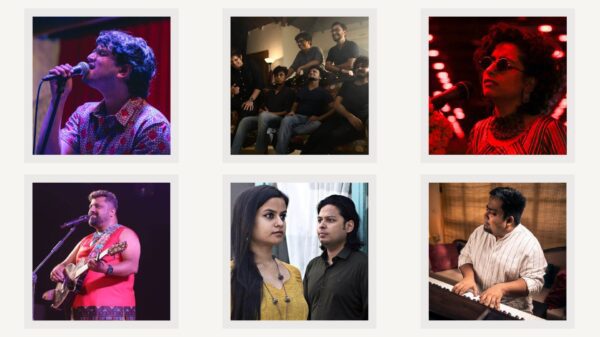My introduction to Maati Baani wasn’t marked by a single track or moment — it was My introduction to Maati Baani wasn’t marked by a single track or moment — it was more of a slow and curious unraveling. I had heard of them in fragments, through videos passed around and collaborations casually referenced, but it wasn’t until much later that I really listened. That too, somewhat backwards — not in the chronological sense, but in the way you arrive at a story already in progress and must circle back to understand what made it special in the first place.
Their self-titled album isn’t just a collection of songs. It’s a love letter to tradition, collaboration, and the quiet magic of music that crosses borders without ever losing its soul.
Boondan Boondan, featuring Ankita Joshi, is the perfect introduction — a love song to the monsoons. It paints with nature’s palette: the papiha’s call echoes through the track, the flute glides in like clouds arriving over a quiet field. It’s soft, vivid, and unhurried — like watching rain trace patterns on a window, where time slows down and your senses come alive.
Tore Matware Naina is hypnotic — the kind of song you don’t just listen to, but fall into. Hindustani classical vocals melt into raw, almost soulful Western textures. Nirali’s voice flows like a river — gentle, deep, and full of feeling. Repeated motifs hold you in place like waves lapping at the shore.
Balma, featuring Mr. François, feels cinematic and borderless. The lyrics move between languages like a conversation between old friends from different worlds. Wind instruments lead the way, and the arrangements feel big — like open skies and winding roads. It’s a track that doesn’t explain itself; it invites you into its world.
Mitwa, with Swaroop Khan, is rooted in the raw, earthy beauty of Rajasthani folk. Khan’s voice is soaked in honesty — textured, unpolished in the best way — and the arrangement around him gives it space to breathe. It feels both ancient and new, like a story passed down but retold in your voice.
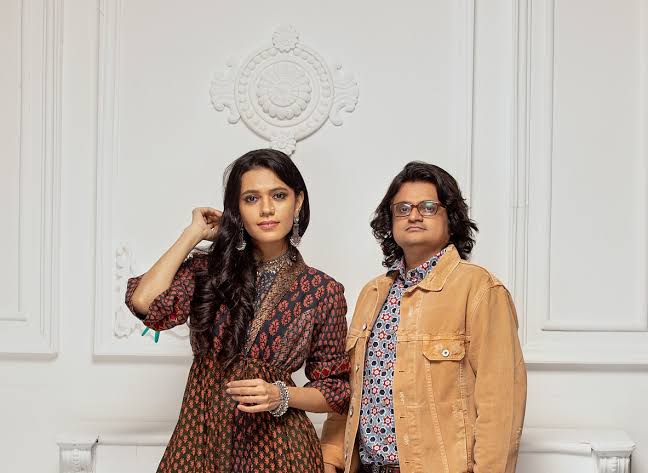
Baawariya, featuring Shankar Tucker, is where the album turns inward. It’s moody and introspective. The haunting flute, the use of komal swaras — it wraps around your thoughts and pulls you gently into reflection. It’s not a song you hum to — it’s one you sit with, quietly.
Then comes Funky Pawa, which flips the whole mood. It’s light, bouncy, global. It’s Maati Baani showing they can groove just as well as they can meditate. The joy is infectious — you can almost hear them smiling through the instruments.
Dhaai Akhar Naam, featuring Lilly Singh, brings contrast — spiritual and punchy all at once. It starts with quiet reflection and then dives into hip-hop. Lilly adds fire. The track becomes something bold: a reminder that formats are made to be broken, and that tradition and modernity can sit at the same table.

Banjara, featuring Mooralala Marwada, strips it all down. The voice is raw, the manjira crisp, and the folk elements left untouched. It refuses to be polished — and that’s its greatest strength. It feels like it belongs to the land.
Finally, Rang Rangiya, with Komal Rizvi, is a burst of joy. The sitar adds sparkle, Rizvi’s voice lights it up. It’s festive, full of color, full of life — a perfect closer.
In many ways, Maati Baani was quietly ahead of its time. It didn’t use fusion as a buzzword — it spoke it like a native tongue. The album respects where it comes from, but it isn’t afraid to look outward. It showed us that classical music doesn’t have to be confined to the concert hall, and that folk traditions can travel the world without needing translation — or compromise.
Where many collaborations feel stitched together, this one flow — naturally, honestly. It’s not trying to impress. It’s just being, and that’s what makes it lasting.
Even now, all these years later, these songs breathe. They stay with you. Because Maati Baani was never just about sound — it was about feeling. And those feelings? They still reach us, in quiet ways, reminding us why we fell in love with music in the first place.
Looking back, this record reads less like a debut and more like an archival moment something placed gently but intentionally in time. Listening to it now feels like reopening a letter you once kept. Its sentiments haven’t faded, only deepened. And that — for an album that crosses languages, traditions, and tempos — is no small thing.

